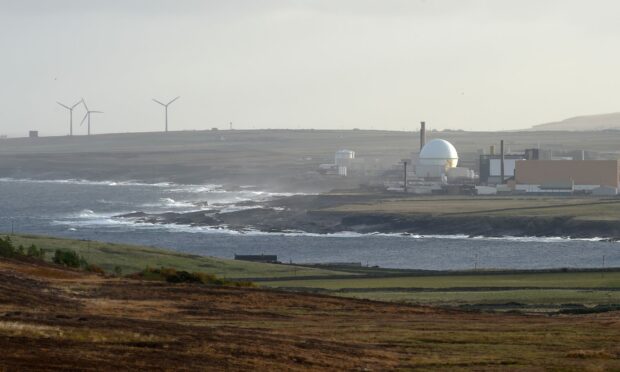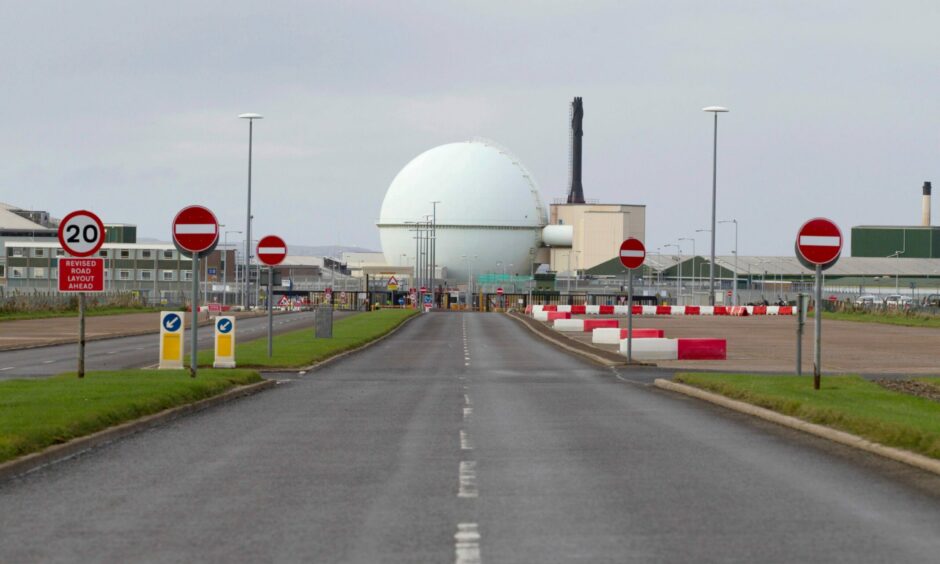Campaigners have expressed their disappointment in learning that 15 radioactive particles were discovered near Dounreay earlier this year.
The particles were found between February and March on the Dounreay shoreline and Sandside beach, with 73% of them being described as “significant”.
Highlands Against Nuclear Transport (HANT) and the Scottish Nuclear Free Local Authorities (NFLA) claim this information was spread through the press rather than properly shared at a meeting of the Dounreay Stakeholder Group.
Both groups have joined forces to seek answers from Dounreay bosses and to dispel “sketchy” and “incomplete” information.
Mark left by Dounreay
Dounreay in Caithness was selected as a test site for new nuclear technology in 1954 and worked as one until 1994.
Following its closure, Dounreay Site Restoration Limited (DSRL) was assigned to fully decommission the site.
There are estimated to be hundreds of thousands of irradiated nuclear fuel particles on the seabed near the plant – left there after cooling ponds were drained between 1963 and 1984.
As of 2011, more than 2,300 radioactive particles had been recovered from the sea floor and almost 500 from the beaches, leaving tens of thousands of undiscovered.
In recognition of the danger, access to Sandside beach has been banned since 1983 and fishing has been banned within one nautical mile of the plant since 1997.
Looking for answers
HANT and NFLA insist neither group was made aware of the discovery of 15 new particles aside from through the press.
In a joint statement, they claimed: “No reference to the discovery of particles was made at the public meeting of the Dounreay Stakeholder Group on March 23 and, at the Site Restoration Sub-Group meeting on October 19, the increase in the particles was described as ‘weather related’.
“DSG members did not receive bespoke letters nor was a special meeting convened to explain the situation and the remedial action that was being taken, a suggestion which HANT originally raised at a meeting of the DSG Site Restoration Group in January 2022.”
‘Eroded trust’
The groups have written to the chief executives of the DSRL and to Sepa demanding the Dounreay Stakeholder Group and the national and local press receive regular reports about the status of particle detection and retrieval at Dounreay.
In their letter, they said this situation has “eroded trust” between the parties and branded it “unacceptable”.
The added: “We are not reassured by statements issued by DSRL that there is no danger as ‘the foreshore is not used by the general public’ (as radiation observes no geographical boundaries and there can be zero guarantee that particles will not pass into areas accessible by local people) and by Sepa that ‘we are content that that the monitoring and retrieval programme in place continues to provide appropriate protection for the public’ (because frankly we do not believe it does).”
A spokeswoman for Dounreay Site Restoration Limited said the letter would be responded to in due course.
But she said: “We closely monitor the environment around the site and have seen an increase in particles found on the Dounreay foreshore this year. The foreshore is not used by the general public. We are looking at wind and wave data to see if we can pinpoint a trend, and will report our findings when they are complete. Safety is our number one priority and we continue to monitor the foreshore on a regular basis.
“The particles in the marine environment around the site were deposited during Dounreay’s research operations in the 1960s and 1970s, and cleaning up that legacy is an important part of our mission to shut down the site safely and securely, ready for its next use.
Sepa response
Sepa provided some background information on its work at Dounreay.
A spokeswoman said: “Sepa is content that the monitoring and retrieval programme in place continues to provide appropriate protection for the public.
“Sepa regulates the Dounreay site via a permit issued to Dounreay Site Restoration Ltd (DSRL) under The Environmental Authorisations (Scotland) Regulations 2018. The permit sets out requirements on DSRL to undertake a beach monitoring programme and to use best practicable means to recover any particles detected, along with any adjacent sand that has been contaminated. DSRL is also required to provide a detailed report of its findings annually to Sepa.
“Sepa takes advice from the Particle Retrieval Advisory Group (Dounreay) on matters related to the particles at Dounreay to support its regulatory oversight and to ensure the public and environment are adequately protected.”


Conversation